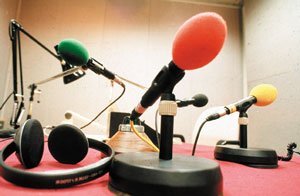
In May 2001, at the Sony Radio Awards, Radio 2 was named Station of the Year for the second time in 3 years. This success represented a massive change in the fortunes of Radio 2, which only five or six years earlier had been seen as a station that was in decline with an image that was very negative to both journalists and potential listeners.
In the mid-1990s, Radio 2 had lost touch with a broader audience and appeared to be ‘in a rut’ with an unclear proposition and music programming that had not moved forward for a number of years. Action had to be taken because its group of listeners could only shrink in number as they grew older.
Action was taken, with outstanding results. By August 2001, Radio 2’s audience figures had surged to 11.75 million listeners a week and Radio 2 had become the most listened to radio station in the country and even overtaken Radio 1 as the most popular radio station among adults.
Winning a broader audience
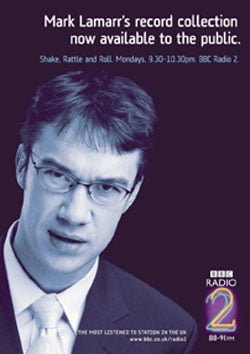
The American business writer Michael Porter argues that the key to ongoing business success is to win the lion’s share of the market. If a business has the biggest market share, then its rivals must have smaller shares and will be disadvantaged in a number of ways eg their costs per unit of output will be higher. In radio broadcasting, the most successful businesses will be the ones that are able to spend money on creating the programming that attract listeners. Successful marketing therefore involves identifying the right sort of marketing mix that will make the firm the leader in its field.
Market segmentation is the process of dividing an overall market into several discrete segments made up of consumers who share common characteristics. Products can then be produced and presented in an appropriate way to meet the requirements of a targeted segment. One of the most common forms of market segmentation is based on demographics eg segmenting a market by age or by sex.
With radio, age is a key element of segmentation. Market planners at Radio 2 decided to re-target their product mix at the 35+ radio listener. They needed to persuade the 35+ audience that Radio 2 was the station for them. In building a new audience, it helps not to alienate those who already tune in. The shift in emphasis needed to take place in a way that did not to upset the existing listener base (55+) which is immensely loyal to the station. Indeed, Radio 2 continues to have the most loyal audience of any BBC national radio station, with listeners averaging more than 13 hours of listening time per week.
A quiet revolution
In moving Radio 2 forward, it was decided to go for a step-by-step process of change over time so as not to offend established listeners. This approach contrasts strongly with that used by Radio 1, which in the mid-1980s went for radical change in order to gain a younger audience (the under 24s). At the time, Radio 1 discarded many of its existing DJs. As a result, a large proportion of its existing older audience turned to commercial radio.
Radio 2’s strategy has been to go for evolution over time. As a result, Radio 2 has retained the support of its traditional audience. It has also won praise from the press from other elements of the media. This represents a huge PR triumph for those who have been managing the process of change.
Refreshing the product
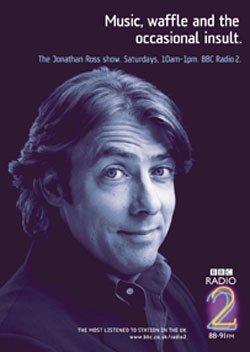
It is only worth spending money on marketing a product that will attract an audience. In the case of a radio station, the product is essentially the programmes. Radio 2 therefore recognised the importance of making sure that marketable programmes were fitted into the key slots of its schedules. For example, presenters such as Steve Wright and Johnnie Walker were combined with “star” presenters, such as Jonathan Ross, Mark Lamarr and Stuart Maconie. Using this strategy it was possible to revitalise the station by concentrating marketing on the fresher programmes and also on the presenters who were most likely to attract a new audience.
Another key aspect of the product is the music played on the station: the playlist. Radio 2’s playlist has been revamped and updated. Traditionally, Radio 2’s playlist was firmly located in the 1950s and 1960s. Today, Radio 2 mixes older music with contemporary music, including fresh new sounds such as Coldplay and Travis. Radio 2’s audience and the press have responded to this innovation very favourably. Research shows that listeners want more than just the sounds of the 1950s and 1960s. They like a blend, including new sounds, and older listeners want to keep in touch with some of the music that their children are listening to. The knock-on effect has been that Radio 2 has given its listeners the confidence to go out to record shops again to add to their CD collection of music.
In September 2000, Radio 2 also launched a web-site to add value to its brand by offering an extension of its activities on-line. Within 6 months of the launch, Radio 2 was regularly achieving over 1 million page impressions each week. This success has been driven by on-line competitions, studio web-cams, webcasts of artists such as Paul Weller and Lisa Stansfield and programme features around the web-site.
Refocusing the product
Radio 2 is required by its public service remit to provide for a range of groups and different tastes. Radio 2 meets this requirement by being more than just a mainstream music station. As well as the key day time shows, Radio 2 also has shows that cover a wide range of music from jazz to rock and roll. In addition, the station also carries some comedy and religious programming, as well as social action campaigns. While providing music to meet the requirements of a range of tastes, the programming includes a contemporary feel that was successfully won over a large audience.
Targeting the market
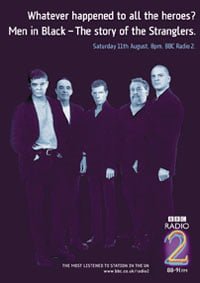
Once marketers are clear about the market segment at which they are aiming, they can develop targeted marketing activities. Whilst Radio 2 has a broader popular appeal than other stations and hence appeals to a broader segment, marketers have some clear ideas about how to target marketing activities to attract a growing audience. Marketing activities are targeted principally at 35-54 year olds. This also has a knock-on effect, because many older people like to think of themselves as being younger than they are.
Targeted marketing involves identifying those parts of the product that particularly appeal to 35-54 year olds. All the research evidence points to this market segment as being particularly interested in presenters such as Jonathan Ross, Steve Wright, Mark Lamarr, and Jools Holland, together with the mix of contemporary and more traditional music that they play, combined with informed comment and interesting chat.
Ongoing promotion
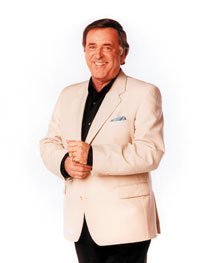
Having refreshed the product offering through the programming and presenters, marketers followed this up with a carefully thought out promotional campaign to challenge the audience’s perception of the station. The campaign involves making the public aware of the ‘big stars’ featured on the station and also surprising the audience in order to give a fresh feel to Radio 2. One example of this surprise element that was included in the regular documentaries featured on Saturday nights was a documentary about punk music. This received rave reviews in the press and from the listening audience. This innovation was followed up by a series of other successful documentaries, including ‘Mancunian Way’, which outlined the impact of Manchester on new musical sounds.
The advertising and promotion used by Radio 2 is based on a consistent identity that is easy to recognise. It includes frequent use of purple, coupled with use of neon and moving backgrounds in television advertising. Media campaigns are prepared several months ahead, and provide consistent messages: Radio 2 is a station that offers surprises, innovation and broad audience appeal. The consistent identity of the media campaigns is designed to enhance the brand identity of Radio 2 and to gain visual recognition for the brand over time. In addition, the brand consistently uses the sign-off line “Radio 2 – the most listened to station in the UK”, which helps to underline the brand’s popularity.
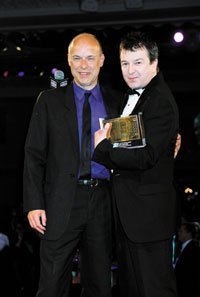
To obtain the best results, advertising and promotional activity needs to be carefully targeted at the right audience: 35-54 year old music lovers. Research clearly shows that in terms of the national press the best media for reaching this audience are national papers like:
- the Guardian, Observer and Sunday Times to reach a male audience
- the Daily Mail and Daily Express to reach the female target audience.
Radio 2 advertisements are targeted not only at the national press but just as importantly at the specialist press. This includes magazines such as Time Out and specialist music publications such as NME, which provide the natural channels of communication. Research shows that publications such as Q and Mojo are particularly effective for targeting music lovers.
Conclusion
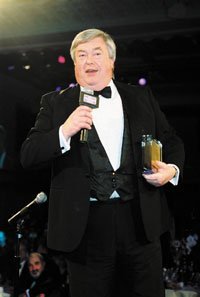
All the evidence suggests that Radio 2 has found the right formula in targeting the 35-54 year old segment of music listeners while at the same time retaining its traditional listeners who are fans of Terry Wogan and Jimmy Young.
However, the station will continue to evolve over time to ensure that it remains relevant to its total audience. New programming and new presenters such as the Album Chart show with Simon Mayo will be introduced. In addition, old favourites such as Friday Night is Music Night will be tweaked to ensure they continue to be relevant.
